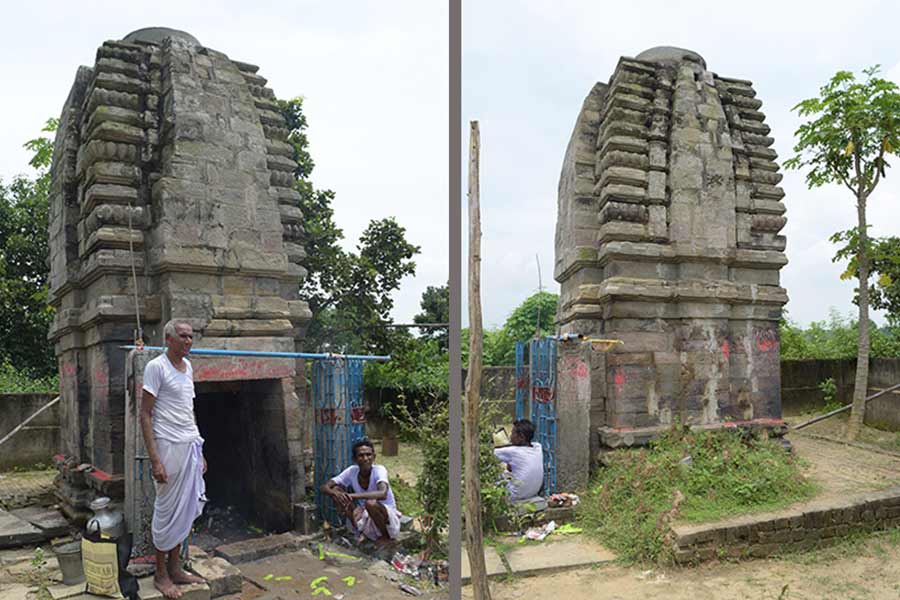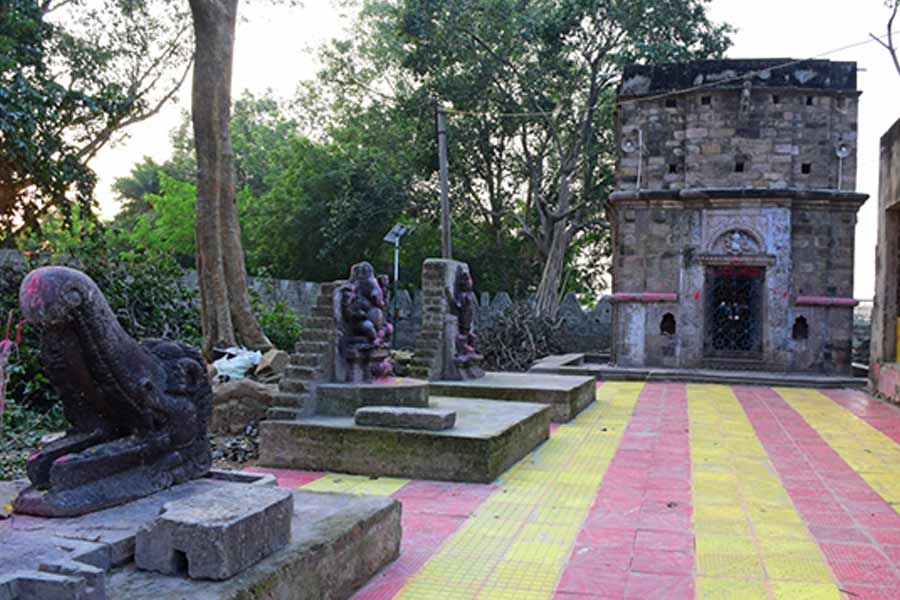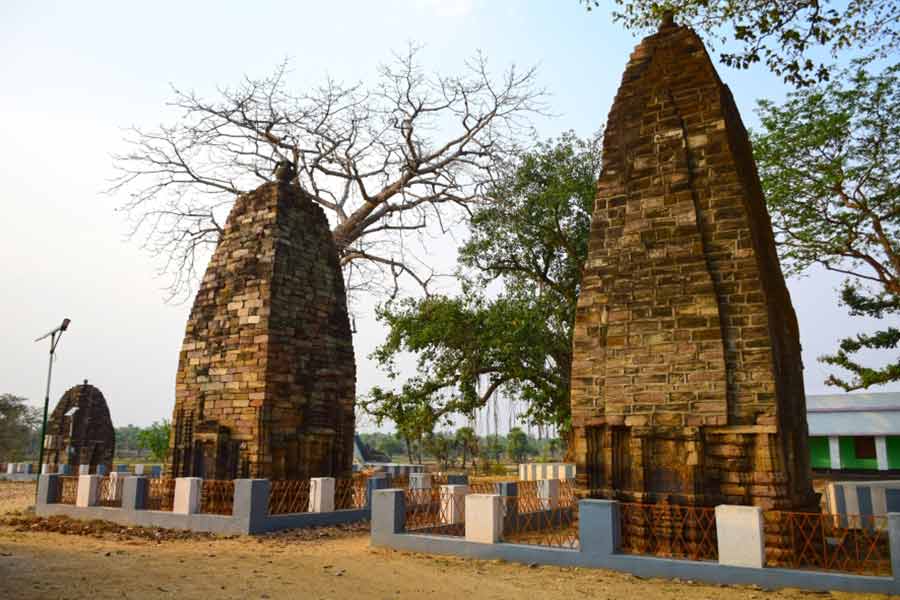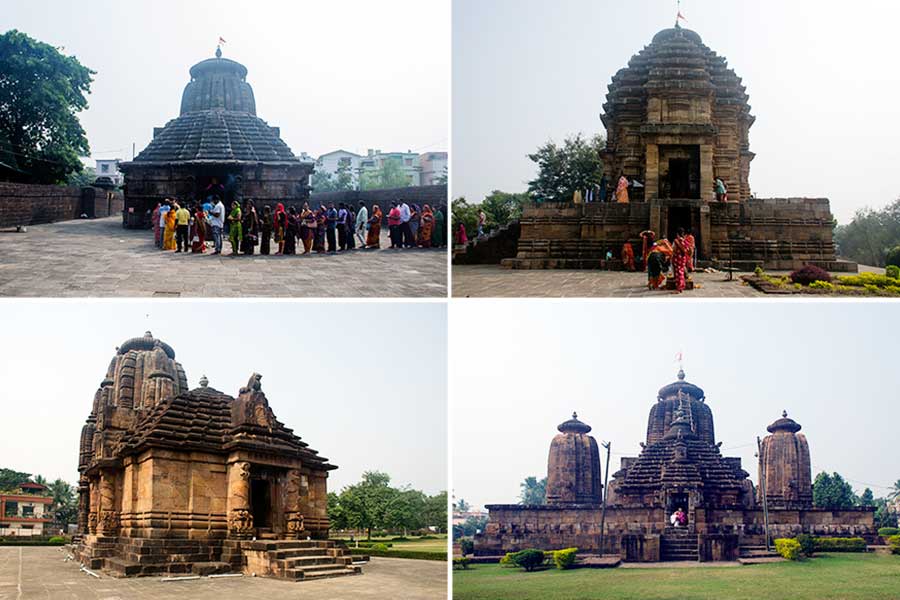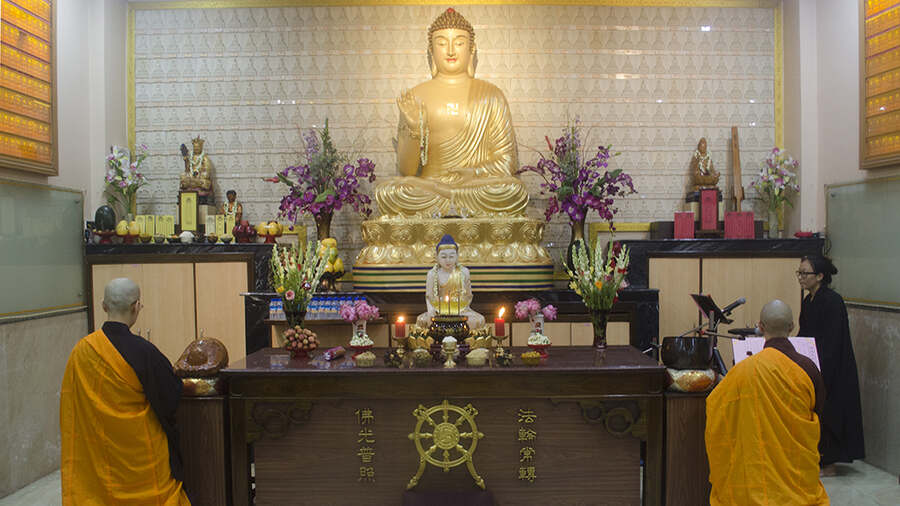Other than being an interesting place for heritage enthusiasts, Tushyama appears very scenic to nature lovers. One of the least visited places by tourists in Manbazar block of Purulia district, Tushyama lies just about 1.5km north-west of the Budeshwar temple complex at Budhpur. It is a location where the Kangsabati river takes a slight bend. There are many boulders here on the river and the odd tourist, who visits the place, relaxes by the riverbank. The place looks ideal for a picnic spot for a small group.
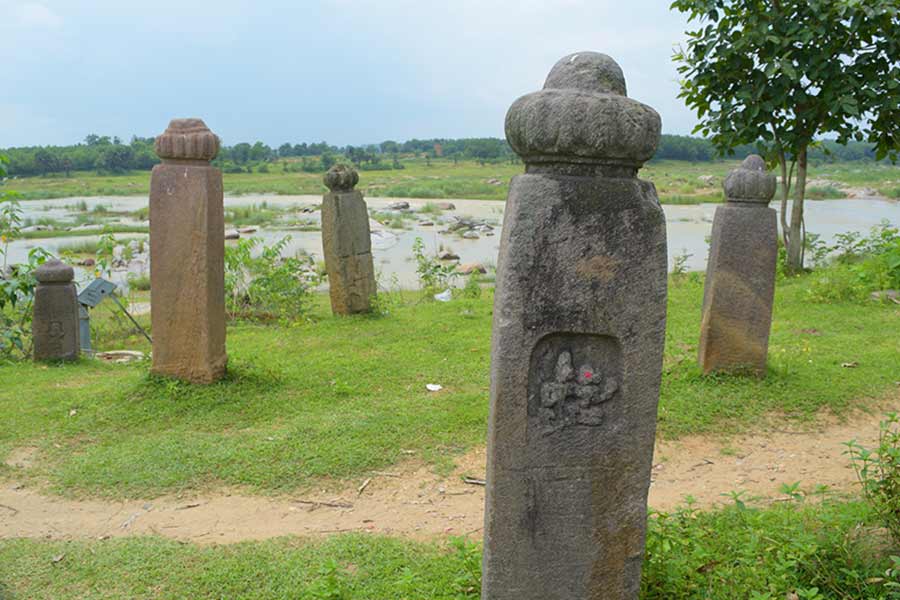
Stones resemble votive stupas in front of Kansai or Kangsabati river at Tushyama
At present, there is a west-facing single Rekha deul at Tushyama. In the past, there is possibility that a flight of stairs was probably built up to the river. Groups of devotees might have bathed in the Kansai and Kangasbati rivers and worshipped in the deul. The height of the temple is about 25 feet. There seems to be a huge Amlaka at the top of the temple of which almost nothing remains. There are not many decorations on its wall. The entrance is 4.5 feet high and about 3 feet wide. One has to bend a bit to enter the inner sanctum.
The temple is tilted a lot to the southern end and is worshipped by the Hindus. Interestingly, the deity is a lingam with a huge yonipatta with a lingam and a male face sculpted on it. The face is considered as that of Shiva as the hair tied up like a jata and has a third eye. Strangely, the temple is known as Adinath Temple by local residents. In close proximity of the temple, there are scattered pieces of decorated stones and some Amlakas.
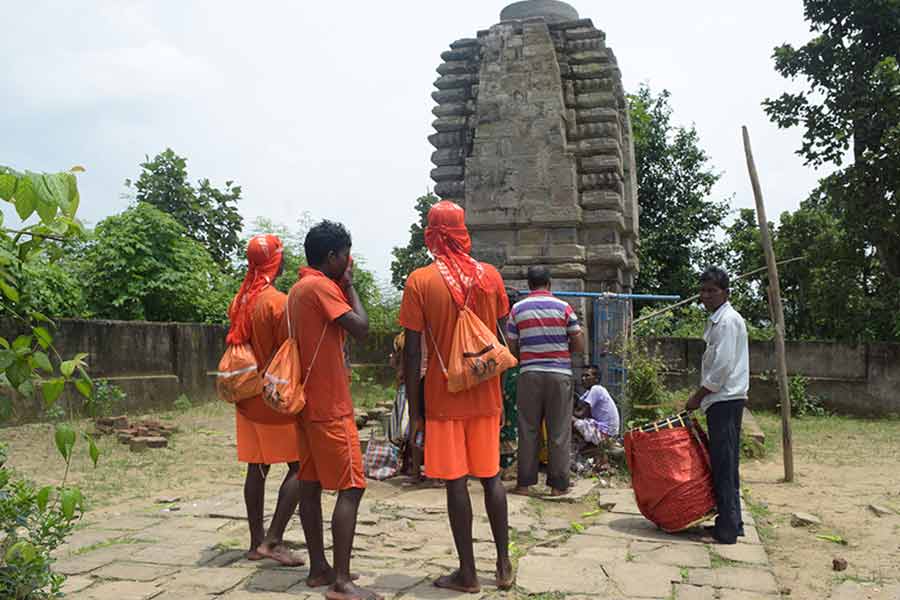
Devotees gather in front of Deul at Tushyama, Purulia
Near this temple is the village of Tushyama. The Mana Bauris live there. When Armenian-Indian engineer, archaeologist and photographer Joseph Beglar visited this place (he mentions it as Tuisámá) during the mid-19th century, he mentions about this small temple and some pieces of architecture scattered around. He considered the temple as Saivic as he found sculptures of Lord Ganesha on one of the architectures. He mentions that the temple architecture being plain but observed carved and moulded stones as well as fragments of attached corner amalakas scattered around. He considered these stones of other temples, which stood somewhere nearby. In fact, he concluded that two temples — one large and one small — stood in the vicinity.
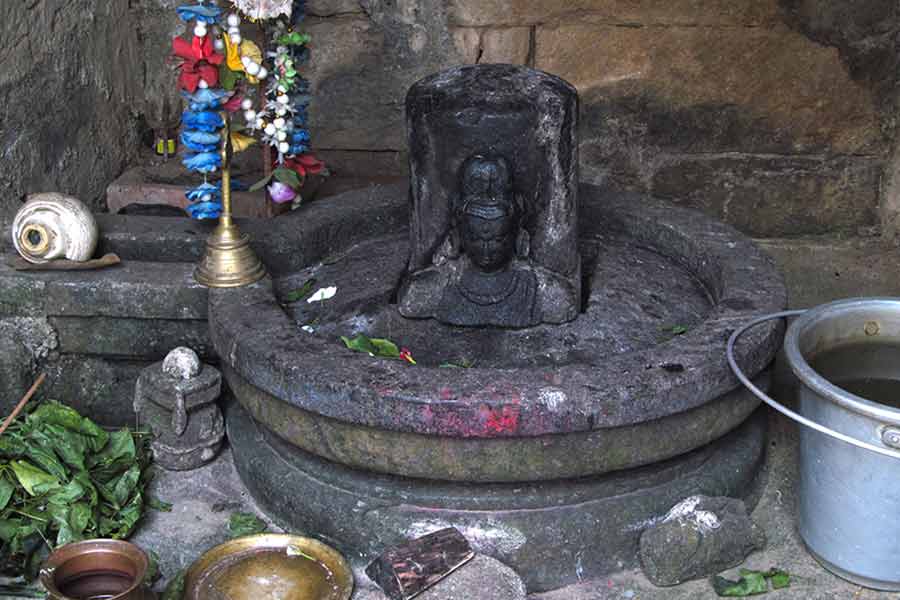
Shiva ‘lingam’ with a face sculpted on it inside the Deul
In Beglar’s account, there is mention of two more temples in the eastern end of the village, one of which was “curiously enveloped in the roots of a bar tree”. He concluded these temples to be “built of materials of older ones”. He believed the temples to be dating to the era of Man Singh, who was the subehdar of Bengal between 1595 and 1605.
Beglar also mentions about a large temple, quarter of a mile to the north-west of the existing one. He found the temple in a mass of ruins, which he describes to have a “mahamandapa and the usual complement of chambers complete”. The temple ceases to exist but the most interesting part is that Beglar talks about numerous votive chaitayas at Tushyama.
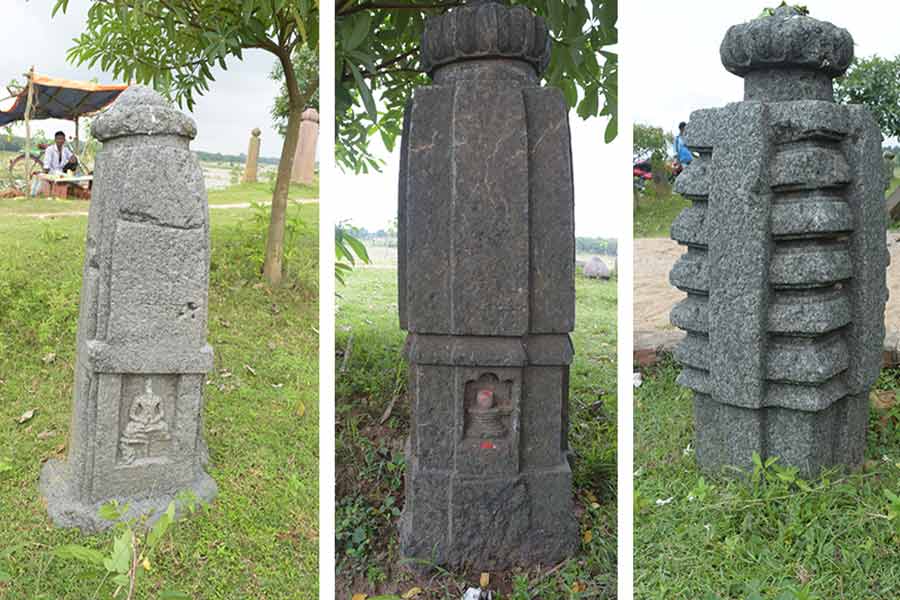
Different type of stones resemble votive stupas at Tushyama, Purulia. There are no proven therories about their existence
The mention of votive chaitayas at Tushyama is interesting, because in the present day, there are numerous stone pillars standing upright on the ground in random manner all throughout the area from the temple to the river. Some of them are standing straight and some stands tilted. They do not look like the traditional votive chaityas like those in collection at Bhairab Sthan at Pakbirra. Nevertheless, almost all of them have a rounded stone on their top similar to the amlaka of a temple.
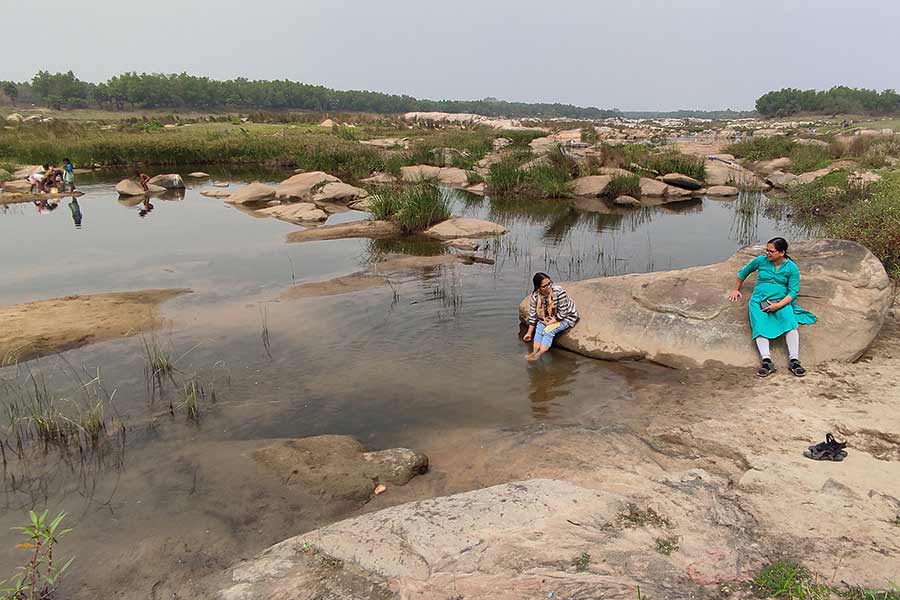
Tourists enjoy the Kangsabati riverside at Tushyama, Purulia
Some local researchers opine that they are Veer Stambha or Sati Stambha but the customary sculpture of a warrior carved on the stone or a small sculpture of a woman praying below as seen in these sculptures is missing here. Instead, one finds varieties of figurines carved on these stones. These may be Jain tirthankar in Kayotsarga posture or seated in Padmasana, Shiva lingam, couples. Other than there are variety of figurines which have worn out beyond identification.
The stones are not of same designs as well. Some are ridged, some are plain. Even the amlakas atop the stone are of different patterns.
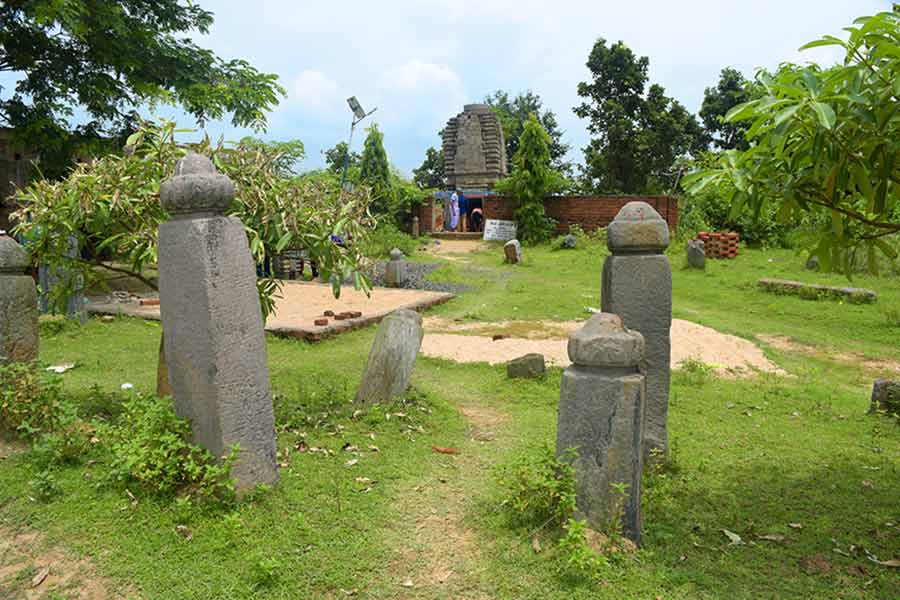
More stones stand between the riverbank and the temple
There have been many theories about the plethora of such stones at Tushyama. One of the popular theories is that this was a place of memorial stones of Jain community. Other theories include the place being a quarry of such stones or a manufacturing hub. None of theories has enough data to substantiate them.
Nevertheless the scenic village of Tushyama with its temple and stone pillars remains a hidden heritage gem of Manbazar area of Purulia district.
How to go
Purulia town can be reached from Kolkata by train, bus or by road. From there one can drive to Tushyama. For travelling by road, the 290km-long route via Bardhaman, Raniganj, Saltora and Raghunathpur is a better option.
Where to stay and eat
Purulia town has accommodation options, Tushyama has none. It is advisable to carry food and water.
